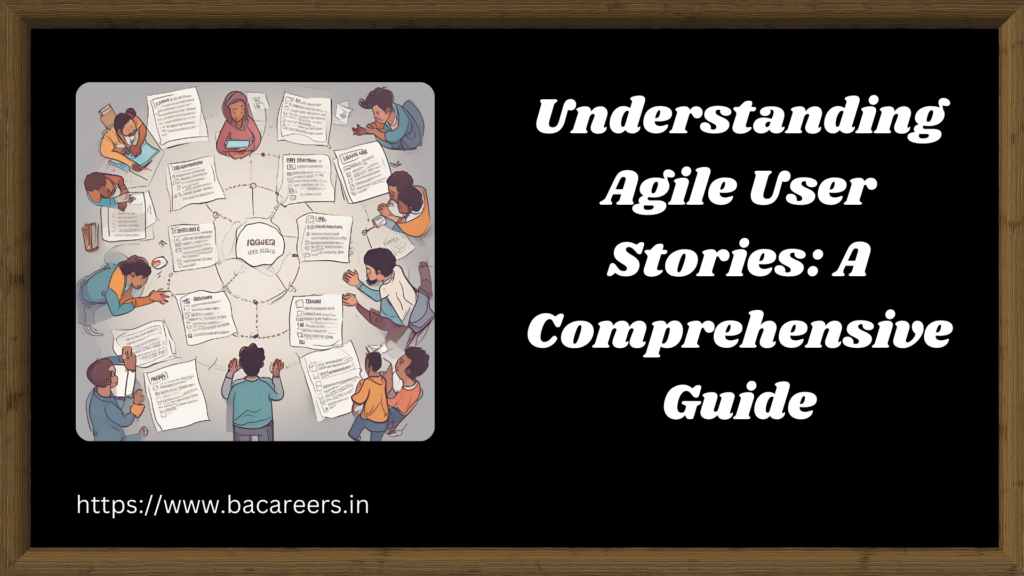What Are Agile User Stories?
Agile user stories are short, simple descriptions of a feature told from the perspective of the person who desires the new capability, usually a user or customer of the system. These stories are a key component of Agile methodology, helping teams focus on delivering value incrementally.

The Structure of an Agile User Story
A typical user story follows a simple template:
As a [type of user], I want [an action] so that [a benefit/a value].
Example:
- As a frequent traveler, I want to receive flight delay notifications so that I can adjust my plans accordingly.
Why Use User Stories?
User stories serve several purposes:
- Clarity: They provide a clear understanding of what the user needs.
- Focus: They help the team focus on user needs and outcomes.
- Communication: They facilitate communication among team members and stakeholders.
- Incremental Progress: They enable incremental and iterative progress in development.
Writing Effective User Stories
Steps to Write a User Story:
- Identify the User: Determine who the user is. It could be a customer, an admin, or another stakeholder.
- Define the Action: Specify what the user wants to do.
- Explain the Benefit: Clarify why the user wants to perform this action, highlighting the value or benefit.
Example:
- User Story: As a registered user, I want to reset my password so that I can regain access to my account if I forget it.
User Story Template
Here’s a basic template for creating user stories:
Title: [Brief Title of the Story]
As a [user role], I want [goal/desire] so that [benefit].
Example:
Title: Password Reset Feature
As a registered user, I want to reset my password so that I can regain access to my account if I forget it.
Acceptance Criteria
Acceptance criteria are the conditions that a user story must satisfy to be considered complete. They define the boundaries of a user story and ensure that the functionality works as expected.
Example:
For the password reset user story:
- Given that I am a registered user,
- When I request to reset my password,
- Then I should receive a password reset email,
- And I should be able to reset my password using the link in the email.
Examples of User Stories in Agile
- E-commerce Site:
- User Story: As a shopper, I want to view customer reviews so that I can decide if the product is worth buying.
- Acceptance Criteria:
- Given that I am viewing a product page,
- When I scroll to the review section,
- Then I should see reviews left by other customers.
- Mobile Banking App:
- User Story: As an account holder, I want to transfer money to another account so that I can manage my finances easily.
- Acceptance Criteria:
- Given that I am logged into my account,
- When I navigate to the transfer funds section,
- Then I should be able to select the recipient, enter the amount, and confirm the transfer.
Conclusion
Agile user stories are a powerful tool to capture requirements and ensure that development teams deliver value to users. By using a simple structure and clear acceptance criteria, user stories help teams stay focused on user needs and deliver functional, valuable features incrementally. Whether you’re developing a new feature for a mobile app or an e-commerce site, writing effective user stories is essential for successful Agile project management.
Related Articles :
- User Story Mapping: How to Visualize Product Development for Improved Collaboration and Success
- Mastering the Art of User Story Format: Strategies for Creating Impactful Software
- How to Write an Effective User Story
- Invest User Story Examples
- What is Agile User Story Acceptance Criteria ?
- User Story Examples and User Stories
- The Art of Agile Story Pointing: How to Prioritize Tasks and Boost Team Productivity

Business Analyst , Functional Consultant, Provide Training on Business Analysis and SDLC Methodologies.

I was recommended this website by my cousin I am not sure whether this post is written by him as nobody else know such detailed about my trouble You are amazing Thanks